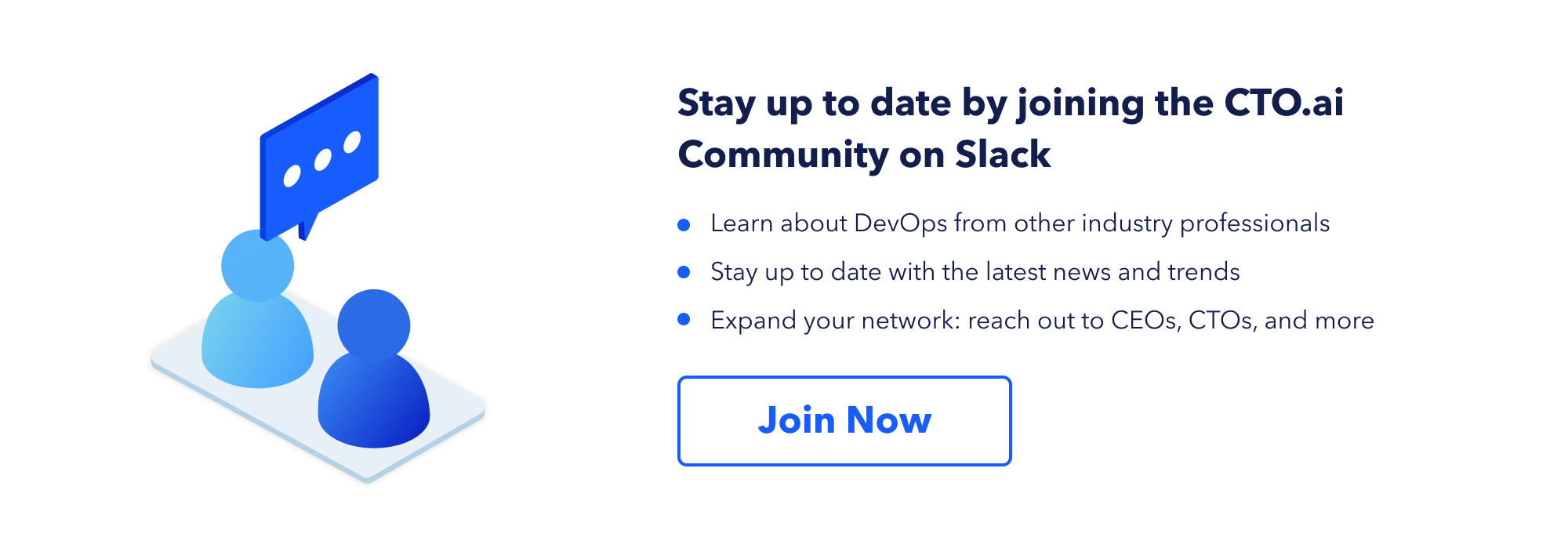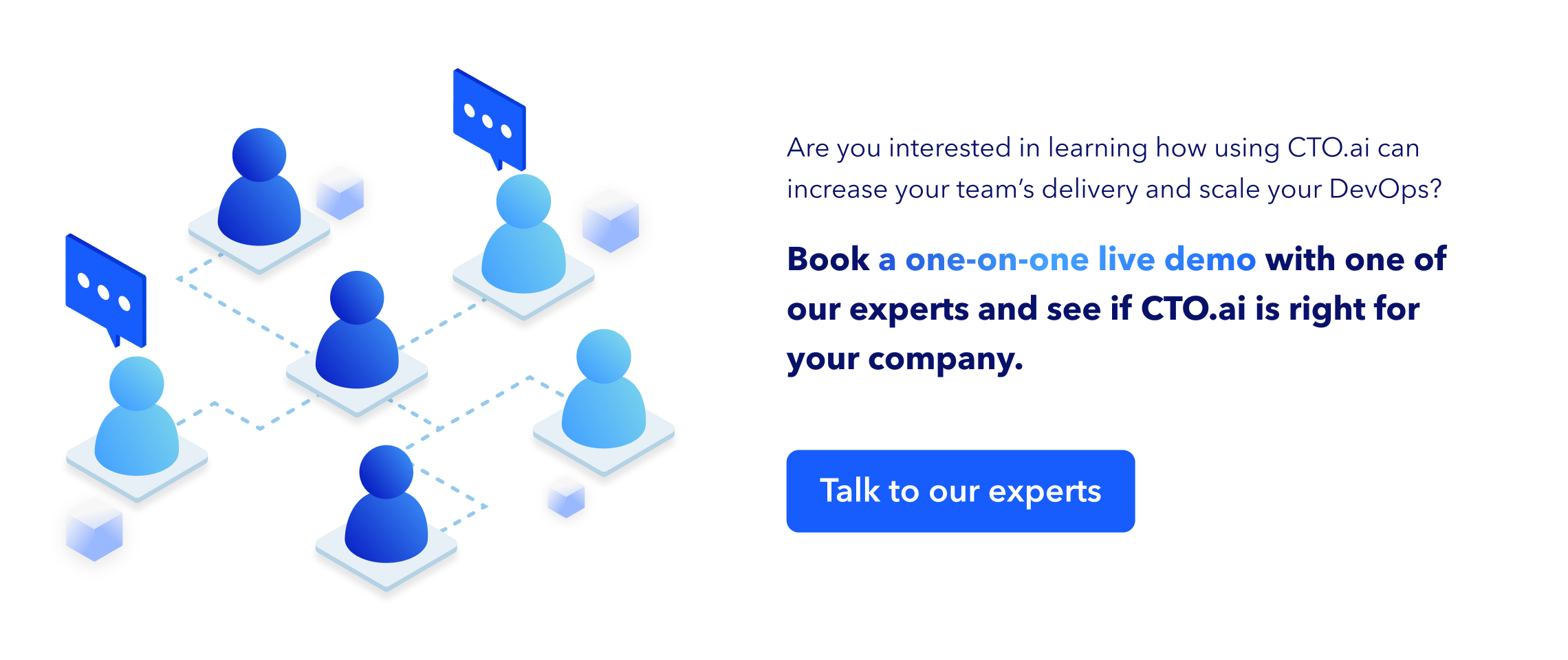In this guide, we will discuss the differences between DevOps and Agile as well as dive deep into both methodologies
- What is DevOps?
- What is Agile?
- Impact of DevOps and Agile in the Software Industry
- Differences between DevOps and Agile
- Which Methodology Should I Use?
- Superfast Delivery Workflow using CTO.ai
Introduction to the world of SDLC (Software Development Life Cycle), before you develop your application, there are some stages you need to plan out like:
- A roadmap for the whole process
- A resource consumption and requirements of your application
- How you will schedule it
- Tasks distribution methods
- Benchmarks and deadlines to achieve
The Software Development process is a long and arduous journey. Multiple components of the software need to be developed simultaneously within a short deadline.
In the Software development life cycle, we have software development methodologies like Waterfall, Spiral, Agile, Scrum, Lean. All these methodologies help you to plan out your software development lifecycle.
What is DevOps?
DevOps is considered a practice of bringing development and operations teams together. Working with DevOps methodologies can help you manage end-to-end engineering processes.
DevOps is more of a development culture that focuses on producing quality products as efficiently as possible. DevOps aims to promote better communication between the development team and the operations team. DevOps philosophy promotes better communication among all the different teams that are responsible for creating the software or application. It helps to automate the whole software development process and hence increases efficiency and decreases costs, which ultimately increases the productivity of your organization. DevOps helps your team to focus on constant testing and delivery. DevOps combines a set of a practices, tools, and a cultural philosophy that automate and integrate the processes between software development and IT teams. It emphasizes team empowerment, cross-team communication and collaboration, and technology automation.
Benefits of DevOps
Before DevOps was introduced, the software development process took a lot of time. And with the introduction of DevOps, the whole deployment of applications has become much faster.
- Improves deployment frequency.
- Achieves faster time to market.
- Improves mean time to recovery.
- Lowers the failure rate of new releases.
Introduction to Agile
Agile refers to an interactive approach that focuses on collaboration, customer feedback, and small rapid releases. Simply put, Agile helps you to manage complex projects.
Agile focuses on having multiple short-term development life cycles. Having shorter development life cycles improves the whole quality of your product. These life cycles prioritize the feedback that you receive from your customers and let you act on them. Agile process focuses on constant changes and each method can be implemented within a range of tactical frameworks like Scrum and Safe.
Agile is a software development methodology that promotes shorter development life cycles and where there is a feedback loop that prioritizes the customer feedback and changes that need to be made according to it.
In the Agile process, there is a whole spiral process like:
- The planning phase: In the planning phase, you plan how you will be building your application.
- The design phase.
- The development phase.
- The testing phase
- The deployment phase.
- And finally, the reviewing phase and the launching phase.
The Agile process is better than old traditional methodologies. In the Agile development process, you have a very short software development lifecycle which means that you take a small microservice of your software, plan, create and send it out so the customer can review it, and then you can make the changes again. Agile lifecycle is very short compared to your old traditional methodologies like a waterfall.
Benefits of Agile
- Transparency
- Predictable costs and schedule.
- Allows for a lot of change.
- Improves the Quality of your product
Now that we have understood both methodologies, we can go ahead and compare both of them.
DevOps vs Agile
Description:
- DevOps combines development and operations to increase the efficiency, speed, and security of software development and delivery compared to traditional processes
- Agile development is an iterative software-development methodology which teams use in projects. Self-organized, cross-functional teams frequently analyze circumstances and user needs to adapt projects.
Execution:
- DevOps: There's no specific path for your DevOps stages and lifecycle.
- Agile: You can work with and use different frameworks for your Driven Development. like SCRUM. With this framework, you can apply it to your application development stages.
Organization:
- DevOps: All team members in the Organization work together to fulfill one DevOps objective which is improving end-user experience with every release. A
- Agile: The job and tasks is shared between team members of different skills.
Priority:
- DevOps: Focuses on having to automate the whole deployment and delivery process and delivering an understanding environment.
- Agile: Focuses on delivering the product on time based on relevant feedback.
Review and Assessment:
- DevOps: The feedback is given by the DevOps team members.
- Agile: The review and feedback is given by the users and customers.
Tools Used:
- DevOps: Jenkins, Kubernetes, Docker, Git, CTO.ai, GitHub, GitLab, Puppet, Ansible.
- Agile: Active Collab, JIRA, VersionOne, Learn Kit, Plan Box, Pivotal tracker.
Aim
- DevOps: The aim of DevOps is to reduce the gap between the Development and the Operations team and hence accelerate the process of application production.
- Agile: The aim of Agile is to produce shorter development cycles and more frequent product releases than traditional waterfall project management.
Agile and DevOps enable faster development on your applications.
Which one is better?
It all depends on your application needs and the goal you are focusing on. You can use DevOps or Agile, depending on your workflow and team. Alternatively, you can use a combination of DevOps and Agile taking the best aspects of both and implementing them into your projects.

Looking for an Agile DevOps Engineer?
At CTO.ai, you can deliver, scale, increase productivity, automate your processes, improve deployment frequency, lower failure rate, and ship your products 200x faster without needing to hire more DevOps.
CTO.ai integration and delivery pipelines enable your ready-to-release software and deploy it in a reliable and efficient manner. This lets you address the gaps between your customer needs and development, testing and operations teams.
We measure and improve the scalability of your software delivery so that you can hire more developers while maintaining the velocity and stability that is needed to win the market and your team can easily adapt according to the changes made on time during your project lifecycle.
Our Platform toolchain emphasizes not only the development process but also the operation or monitoring process. Integrating our command-based workflow into your software and applications enables you to focus on collaboration, constant testing, and delivery.


Comments